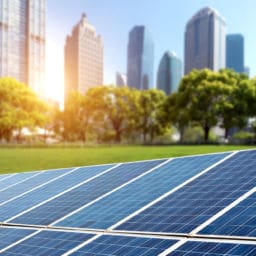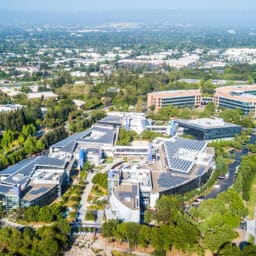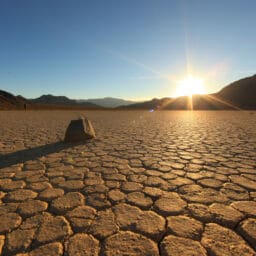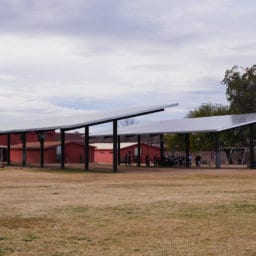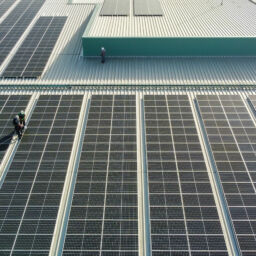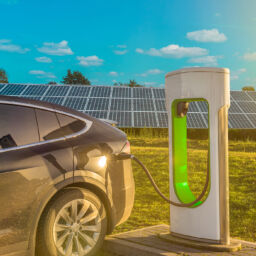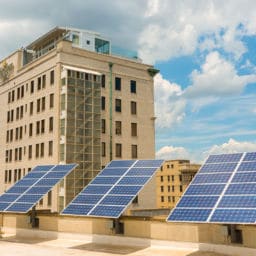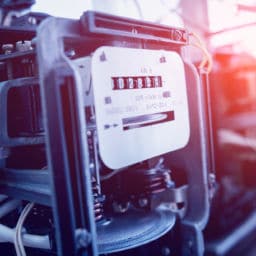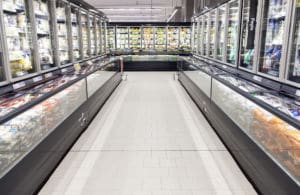 There has long been a general trend of business and governmental organizations looking for ways to improve the resiliency of their facilities. For businesses with unusually costly downtime, the idea of having backup onsite energy production is very appealing. Here are just a few examples:
There has long been a general trend of business and governmental organizations looking for ways to improve the resiliency of their facilities. For businesses with unusually costly downtime, the idea of having backup onsite energy production is very appealing. Here are just a few examples:
- Food Distribution Centers
- These are typically refrigerated warehouses. In the event of a power outage, if the food drops below a certain temperature, it must be disposed of immediately leading to significant loss
- Grocery Stores
- Similar to food distribution centers, if refrigeration within stores goes offline, the same food spoilage issues can occur
- Manufacturing facilities that run multiple shifts
- For certain organizations that cannot operate 24/7 due to a power outage, the loss in revenue can be substantial
- Critical process facilities
- A number of organizations run critical processes that cannot be shut down mid-process without significant financial losses. A couple of examples include:
- Casting facilities – in the event of a power outage, if the casting process is interrupted, the material within the casts may cool and harden destroying the outer casting resulting in significant loss
- Scientific testing facilities – critical measurement equipment often needs to be calibrated over the course of several weeks. If the power goes out mid-process, this equipment often needs to be re-calibrated and re-certified meaning the equipment can be off line for the several weeks
- A number of organizations run critical processes that cannot be shut down mid-process without significant financial losses. A couple of examples include:
With Government entities, the needs are different. For these types of organizations, the goals are to maintain societal stability. Here are a few examples:
- Municipal facilities
- Cities, Towns, Counties and Federal agencies all have critical infrastructure like water treatment facilities that cannot go offline in the event of a power outage without massive impact to the daily lives of its’ citizens
- Emergency facilities
- Most Cities and Towns have local emergency facilities in place to support its’ citizens in the event of a major disaster such as wildfires or earthquakes. These facilities, by their very definition, are required to operate when major power producers go offline
- Schools
- Californians have recently seen how impactful the closure of schools can be to the general populace. There has been significantly more emphasis put on the idea of keeping schools operational in the event of power outages
New Factors to Consider
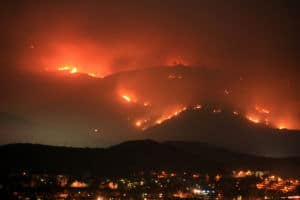 While major disasters have always been a factor that businesses and Governments have had to contend with, in recent years, the number and severity has increased. In the past 20 years, wildfires have become more common and significantly more intense. Additionally, as the cost of real estate has escalated over the past 30 years within California, the number of people living within “Urban – Wildland Interfaces” (areas where urban development butts up against unoccupied regions) has increased dramatically. Urban – Wildland Interfaces tend to be the regions where the majority of lives lost and property damages occur from wildfires. The culprit for the majority of the largest wildfires in recent years has been faulty power lines owned by major electrical utilities.
While major disasters have always been a factor that businesses and Governments have had to contend with, in recent years, the number and severity has increased. In the past 20 years, wildfires have become more common and significantly more intense. Additionally, as the cost of real estate has escalated over the past 30 years within California, the number of people living within “Urban – Wildland Interfaces” (areas where urban development butts up against unoccupied regions) has increased dramatically. Urban – Wildland Interfaces tend to be the regions where the majority of lives lost and property damages occur from wildfires. The culprit for the majority of the largest wildfires in recent years has been faulty power lines owned by major electrical utilities.
In response, utilities have taken the highly controversial step of shutting down entire swaths of the grid when fire conditions are the most dangerous. While this does create a safer environment, it comes at the cost of large populations within the State going without electricity for days and sometimes weeks.
Potential Solutions
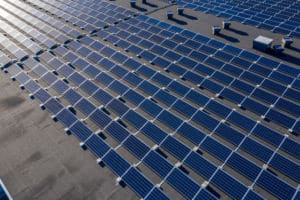 While the situation may seem dire, solutions are available right now to mitigate many of these issues. Here are a few:
While the situation may seem dire, solutions are available right now to mitigate many of these issues. Here are a few:
- Solar + Storage:
- Solar panels are eco-friendly and only require sunshine to provide power in the event that the grid is unavailable. Considering that the sun shines in California, on average, about 300 days a year, this can be a very dependable solution. When the sun is not shining, and depending on the length of time a facility can last without power, batteries can be an effective solution for many. Batteries can store excess power created by the solar panels during the day and can be cycled into the facility once the sun sets
- Solar + Storage + Generators
- For facilities that cannot afford to go down for any reason, a backup source of energy can be added such as a generator. Generators are typically powered by diesel or natural gas and can run indefinitely as long as a fuel source is available. This solar + storage + generator solution is often called a micro-grid and allows a facility to run without grid power indefinitely
- Fuel Cells
- Fuel cells have evolved over the years and have begun replacing natural gas and diesel-fired generators. While they tend to be more costly, they typically produce far fewer greenhouse gases than l fossil fuel-powered generators.
- Stand-alone generators
- For facilities that are only looking for a back-up power source, stand-alone generators have often been the primary choice as they tend to be less expensive and are only used for a very small fraction of a year
New Incentives and Financing Options
While a wide array of technical solutions have evolved to mitigate these issues, new incentives and financing options have also sprung up to support these solutions. Incentives like the Self Generation Incentive Program (SGIP) and the new SGIP – Equity Resiliency program both offer substantial upfront cash payments to reduce the cost of adding battery storage to facilities. Additionally, financing solutions have become more flexible in recent years, and companies like Sustainable Capital Finance (SCF), are now offering Power Purchase Agreements (PPAs) that support solar, storage, and other technologies within the resiliency space. If you would like to learn more, please inquire at info@scf.com.


